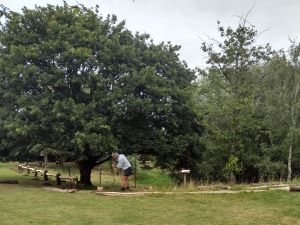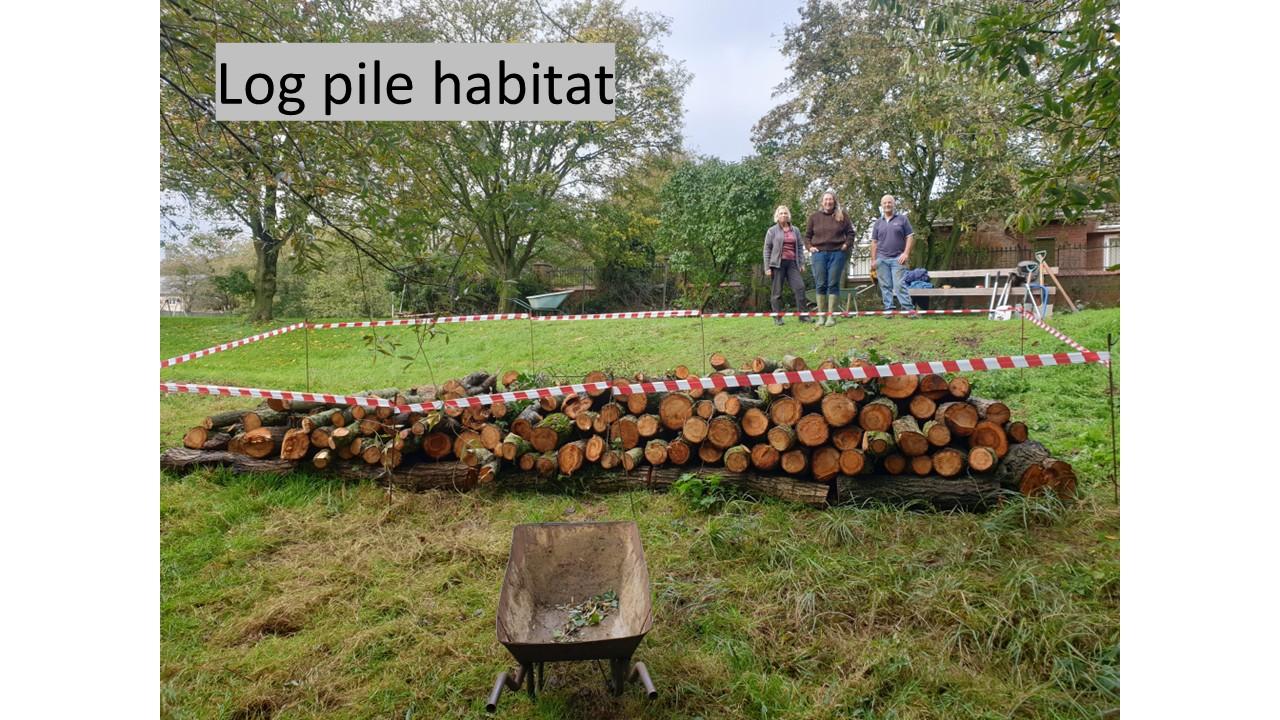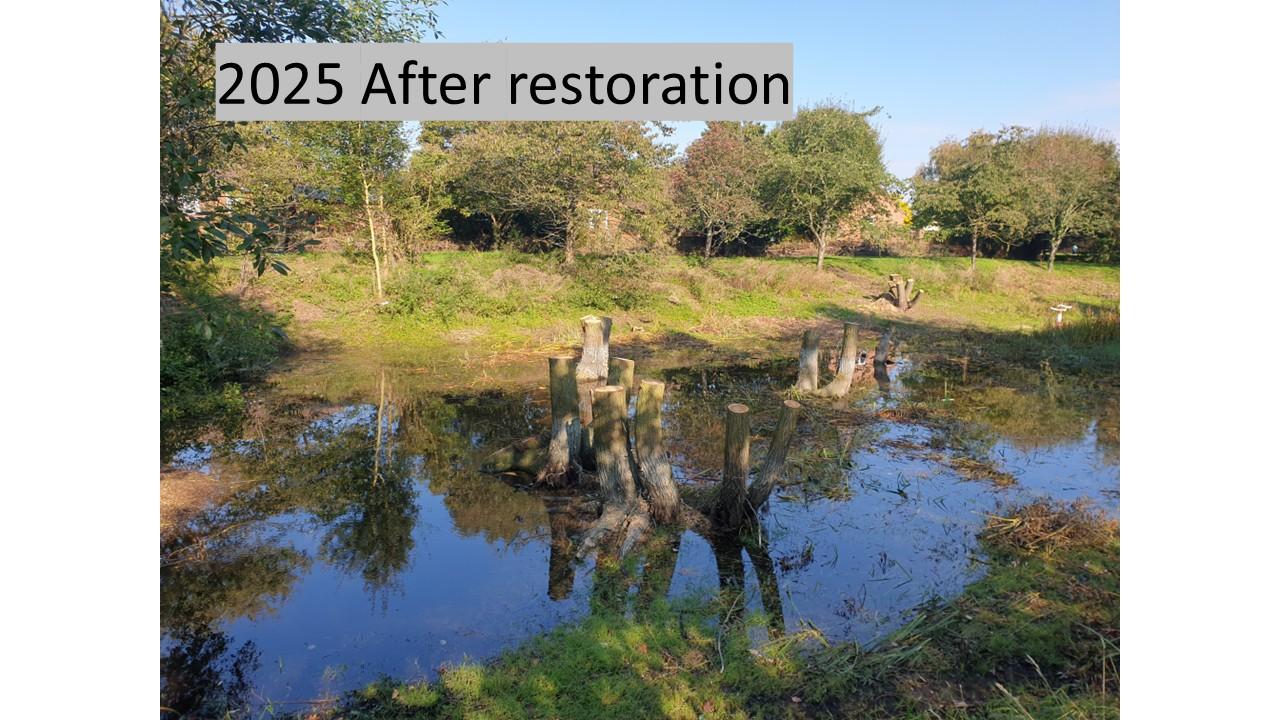Ongoing & Latest Progress since 2024
This page will be added to as and when further work is undertaken at East End Pond.
This entire project is being managed by Pete Coles on behalf of the entire village and Parish Council who own it. The work has been carefully planned so as minimum disruption is caused and extensive re-use of all 'Waste' materials is fully utilised for the overall benefit of the project. Hence tree trimmings are used for hedge building, soil/sediment is used to cover and extend the natural banksides.
Up-cycling tree trimmings,
These structures provide excellent habitat for various wildlife, offering shelter, nesting sites for small birds, and food sources, as they are a haven for insects, beetles, small mammals like hedgehogs, birds and even amphibians.
Now we can start on the bottom of the pond.
Placing sediment ready for it to be reused.
At the right time of the year a new safety fence was put in place.
It was decided that instead of a modern flimsy trellis type fencing a more robust traditional construction would be used. This ancient craft of rustic fencing requires skilled craftsman, Pete was able to locate one and ours was built using Cleft sweet chestnut, this is because this wood offers a very attractive rustic appearance and has a high tannin content protecting the wood from rot.

After the hard work it does look really good!
What next then?
Now the water has dried up and the silt removed decisions have been made what happens to what trees; take them out, keep, trim or pollard?
There were/are a lot of willows many were self sets over the years.
Re-using some of the logs.

Now topped off with dry grass trimmings and then some soil/silt.
Its starting to look rather respectable now after all the hard work so far.
Just need some more water, ducks, and the pollarded trees to shoot and grow. A calming relaxed view well worth looking at all we need is a........
Another safety aspect that had to be addressed to meet prsent day legislation.
Okay that's the human side dealt with.
Back to Nature and creating secure habitats for declining numbers of some species. Swifts have difficuly finding nesting places these days as modern house building does not have protruding roof beams nor holes. There are some bats around the Pond area as local residents often see them in the evenings. This combined habitat is solar powered and emits a pitched sound for the swifts to head towards, hopefully they will then nest and raise young. Its also worth mentioning that Penfield Nature Reserve is also providing bat boxes, so fingers crossed!
Ah that looks a lot better.
The Future?












